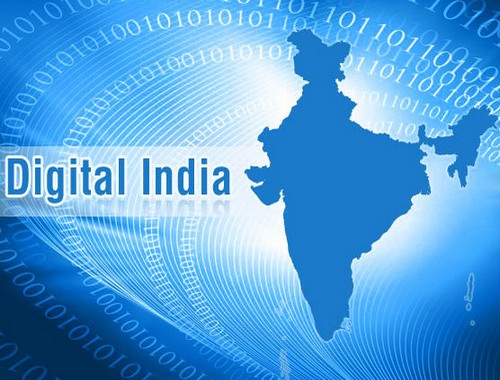- Group Discussion (GD) ›
- Topics ›
- GD Topic - Digital India - Whom Does it Benefit?
GD Topic - Digital India - Whom Does it Benefit?
6 people are having a discussion on the topic (Ashwin, Parth, Dolly, Fathima, Garima, Radhika)
Category: Political, Technology, Social
Group Discussion Starts
Ashwin: Good morning everyone. I am very happy to begin todays discussion on one of the initiatives taken up in the recent times to transform India into an empowered society with access to IT for everyone under the leadership of our Prime minister Narendra Modi. The main vision of this program is focused on providing every citizen the digital infrastructure as a core utility, services and e- governance, and digital empowerment of citizens
Parth: Yes, carrying forward his point it is an ambitious project of laying 7 lakh kilometers of cable providing broadband to 2.5 lakh villages by 2017, which can completely change the fate of India and drive India towards a developed country from a developing country.
Dolly: Yes, I agree but for a country like India with huge red tapism and slow processes can it achieve this ambitious project? If yes, who will be the beneficiaries of this project.

Image: own website
Fathima: True, you have rightly pointed out that red tapism hinders the progress of any project for that matter, this program in fact is to eliminate the red tapism, bureaucracy and improve the transparency. Since the changing trends of penetration of mobiles and internet and growing demand for e- services the way things are currently going, Digital India project is no longer a dream, it is in action and government is taking steps to ensure its completion.Moreover a committee headed by Shri Narendra Modi is formed to monitor the strict completion schedules of the project.
Garima: Every citizen in India gets benefited through this programme. With e- governance coming in and with the introduction of Digital locker where one can store their documents safely in the cloud and could be accessed form any time at any place with a click. This reduces the paper work which infact eliminates various illegal happenings in the government. It increases the level of interaction between different departments through Information and Communication Technology and increases the speed of work and processes them instantly ensuring no stagnation in the work.
Radhika: Yeah, once the change is brought it could change the Indian education system, with all the Gram Panchayats having access to internet will provide access to different teaching aids and materials and empowers everyone and increases the literacy levels in the country.
Parth: With two-thirds of rural population and only 30 percent reach of internet, the penetration of Internet into rural India would help farmers in accessing information regarding cropping techniques, seeds and various government schemes and hence can enlighten their lives.
Dolly: India, with a humongous demand for telecommunication services is a huge opportunity for domestic as well as financial investors hence the digital India is also beneficial to businesses.
Ashwin: It also aims at eliminating imports of electronic goods into India and manufacture them in India( Make in India) thereby providing huge potential for employment in not only IT sector but also in the electronics sectors and hence benefitting the jobless. With digitization increases the demand for low end jobs like BPOs especially encouraging people in rural India with greater opportunities.
Radhika: With e-healthcare, e-commerce, e-ticketing etc., coming handy benefits people of every age, gender and region to easily communicate with each other and make their lives comfortable bringing everything to one’s door step.
Conclusion
Digital India is a project which really improves the quality of lives of many people. It bridges the gaps between the digital haves and digital have nots. It helps buyers meet sellers, marketers to promote handicrafts etc., There is every need on our front acknowledge the benefits of the initiative and take a step forward and promote it by empowering and educating people in every nuke and corner of the country to reap the benefits of “Digital India”
Facts
The Digital Indian program was accepted by the Union Cabinet on 20th Aug 2014.
It was launched on 1 July 2015 by Shri Narendra Modi.
Division of Electronic and Information Technology (DeitY) is responsible for Digital India program and encompasses all the current schemes being run by the Telecommunications Division, Rural Growth Ministry and Deity.
The different projects under this scheme could see an investment of up to Rs 1, 00,000 lakh Crore by the Government over the next 3-4 years.
The National Optical Fiber Network which was launched by the UPA government but which didn’t have much progress during the last four years. It is expected to be the backbone of the entire project. The NOFN which was launched in 2011 had the aim of providing high speed internet to about 2 lakh gram panchayats in India at a cost of about Rs 20,000 Crore.This program involves about 20 ministries in the government
This article has been researched & authored by the Content & Research Team which comprises of MBA students, management professionals, and industry experts. It has been reviewed & published by the MBA Skool Team. The content on MBA Skool has been created for educational & academic purpose only.
Browse various similar group discussion topics. The Group Discussion section covers more than 100 topics.
Continue Reading :
What is MBA Skool?About Us
MBA Skool is a Knowledge Resource for Management Students, Aspirants & Professionals.
Business Courses
Quizzes & Skills
Quizzes test your expertise in business and Skill tests evaluate your management traits
Related Topics
All Business Sections
Write for Us